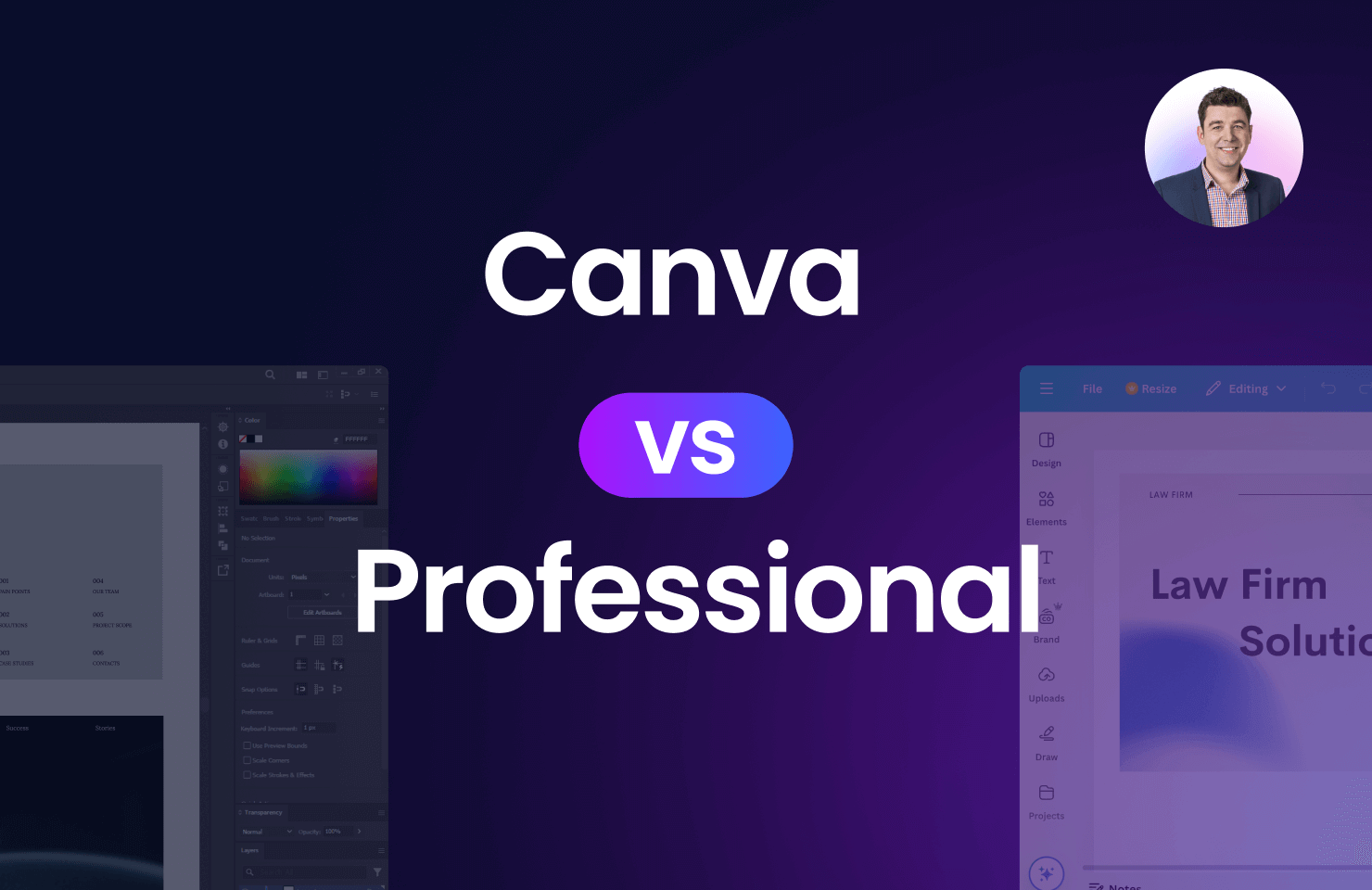Recently, a partner heading marketing at an 80-person commercial firm asked me a question that many law firm leaders grapple with: “We’ve got our 2025 marketing budget locked in – should we prioritise updating our website, investing in video content, or doubling down on LinkedIn?”
It’s a common dilemma. With limited marketing resources, how do you decide where to invest? While I’ll address these specific options shortly, the answer begins with a counterintuitive insight about law firm marketing budgets that might reshape how you approach this decision.
The Counterintuitive Finding: Less Marketing Spend, Better Performance
A recent benchmarking study by Macquarie Bank uncovered a fascinating pattern: high-performing law firms consistently spend less on marketing and business development compared to their peers. The study defines high-performing firms as those achieving greater than 30% net profit margin before partner drawings and salaries – a significant benchmark in the legal sector.
The numbers tell a compelling story. These top-performing firms invest approximately 2% of their total revenue in marketing and business development activities. In contrast, other firms spend an average of 4% – double the amount for lower returns.
At first glance, this finding seems to defy logic. Surely more marketing investment should yield better results? The reality is more nuanced. The distinction lies not in the amount spent, but in how these high-performing firms approach their marketing investment.
This insight is particularly relevant for firms like our questioner’s, where decisions about allocating marketing budget between website updates, video content, and LinkedIn presence need to be made. It suggests that the key to success isn’t necessarily about choosing all available marketing channels, but rather about making strategic choices about where not to invest.
For many law firm leaders, this insight arrives at a crucial time. As firms face increasing pressure to demonstrate return on investment while maintaining competitive positioning, understanding how top performers achieve more with less becomes invaluable. The question shifts from “How much should we spend?” to “How should we spend?”
In the sections that follow, we’ll explore the practical implications of this finding, examining how firms can apply these insights to their own marketing budget decisions. However, it’s crucial to understand that this 2% benchmark isn’t a universal target.
Some practice areas require a different approach to this benchmark. Consumer-facing practices like personal injury and criminal law typically require higher marketing investment to maintain a consistent flow of individual clients. Similarly, firms with diverse, unconnected practice areas – for example, those offering wills and estates, planning and environment, and migration law – often cannot achieve marketing economies of scale. These firms typically need to treat each practice area as a separate business from a marketing perspective.
However, for commercial and private client firms where new work primarily comes through existing relationships (whether referrals or current clients), the 2% benchmark serves as a valuable reference point for evaluating marketing investment. The key is understanding whether your firm’s structure and practice mix allow you to achieve marketing efficiencies, or whether you need a more nuanced, practice-specific approach to budget allocation.
Understanding Your Marketing Budget Framework
When advising law firms on marketing budgets, I often find they’re trying to plan too far ahead. Most law firms will benefit from using a rolling quarterly budget rather than locking themselves into annual commitments. This approach, which I observed repeatedly during my time as head of marketing in law firms, allows for more responsive and strategic investment decisions.
The Rolling Quarter Approach
- Adjust spending based on the firm’s current performance
- Respond to emerging opportunities
- Reallocate resources when certain initiatives aren’t delivering results
- Maintain flexibility while keeping strategic goals in sight
The $20,000 Per Million Rule
- Email signatures across the firm
- Business cards (consider if you need temporary cards)
- Invoice templates and letterheads
- Email marketing templates
To help firms establish a baseline for their marketing budget, here’s a practical rule of thumb: allocate approximately $20,000 for every million dollars in revenue. For an 80-person commercial firm like our questioner’s, this creates a clear starting point for budget discussions.
However, there are important considerations when applying this benchmark:
What's Included (and What's Not)
- For larger firms with in-house marketing teams, staff salaries typically sit within the general salary budget, not the marketing allocation
- One-off projects, such as website rebuilds that occur every few years, are usually treated as separate capital expenditure
- The focus is on external marketing spend – things like content creation, digital marketing, events, and advertising
Setting Your Marketing Budget Priorities
- Does your website reflect your firm’s real-life reputation, expertise, and experience?
- If not, can this be fixed by updating content alone, or is a more substantial overhaul needed?
A Note on Budget Flexibility
Where High-Performing Firms Invest (And Don't)
Areas Where Top Firms Reduce Spending
- Large-scale hospitality events
- Broad advertising campaigns
- General sponsorships
- Resource-intensive tender responses
Strategic Investment Focus
Practice Area Focus
Positioning Before Platform
- Who you help
- What specific problems you solve
- How you solve them
For an 80-person firm, this positioning often needs to happen at the practice group or individual level, rather than trying to position the entire firm under one broad message.
Making Smart Platform Decisions
LinkedIn Considerations
- Posts typically have a short lifespan (around a week)
- Advertising can be expensive relative to reach
- Content needs constant refreshing
Video Content Strategy
- House video content primarily on their website
- Repurpose content across multiple channels
- Use videos to support their positioning rather than just create social media presence
The Website Foundation
For our questioner considering whether to prioritise website updates, video content, or LinkedIn, the decision framework becomes clearer:
- First, ensure your website accurately reflects your firm’s capabilities and expertise
- Only then consider additional content investments like video or LinkedIn
- When you do invest in content, ensure it can be repurposed across multiple channels
- Focus on specific practice areas rather than trying to cover everything
Practical Steps for Implementation
Let’s bring this back to the original question about allocating budget between website updates, video content, and LinkedIn. Here’s a practical framework for making these decisions.
Step 1: Assess Your Current Position
- Take your total annual revenue
- Calculate 2% of this figure
- Compare it to your actual marketing spend
Step 2: Website First
- Does it reflect your firm’s current expertise and reputation?
- Is the content current and valuable to your target clients?
- Does it effectively showcase your practice group strengths?
Step 3: Content Strategy Development
- Choose one or two practice areas to focus on initially
- Ensure any video content has multiple uses beyond social media
- Plan for content repurposing across channels
- Consider the longevity of different content types
Implementation Tips
- Use quarterly planning cycles to test and adjust your approach
- Start with one practice area’s content strategy before expanding
- Measure engagement and adjust accordingly
- Consider the time investment required from partners and staff
Final Thoughts
The key insight from high-performing firms isn’t just about spending less – it’s about spending smarter. By focusing on your website first, being selective about practice area focus, and thinking strategically about content longevity, you can achieve better results without increasing your overall marketing budget.
Remember, the goal isn’t to do everything – it’s to do the right things well. For most firms, this means starting with a strong website foundation before expanding into additional content channels.
Ready to get started?
Remember these key points:
- Start early with your planning
- Think beyond just address updates
- Use the move to strengthen relationships
- Document everything for future reference
Found this helpful? Join our weekly live Q&A sessions where we answer questions like this from law firm leaders.
Subscribe to our email list to:
- Get invites to our live Q&A training sessions
- Submit your questions for upcoming sessions
- Access our full archive of answers
Have a specific question? Submit to paul.evans@pillarscroll.com

Paul Evans is a legal marketing expert with extensive experience helping lawyers build their practices.



